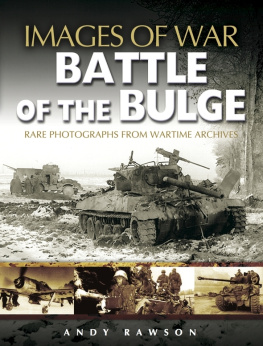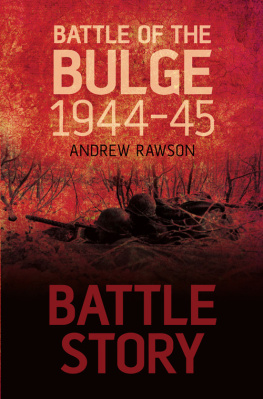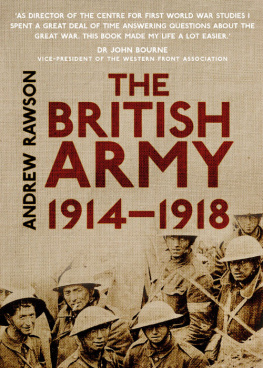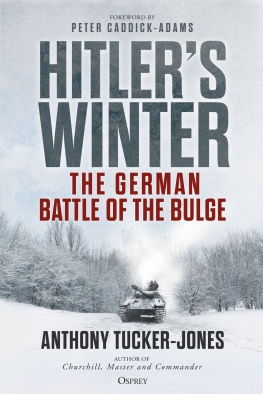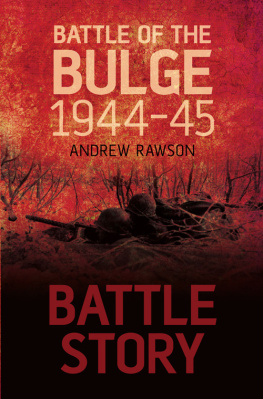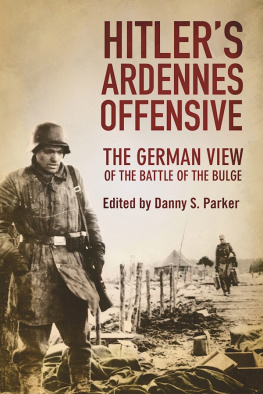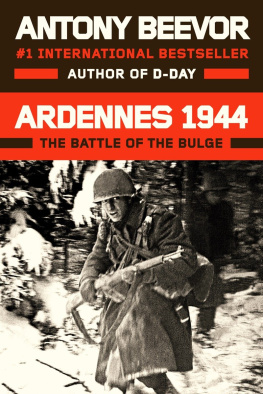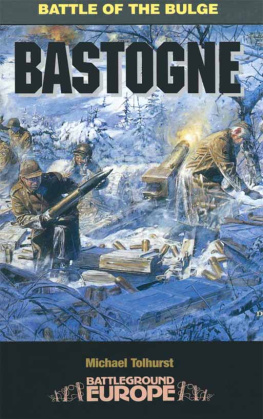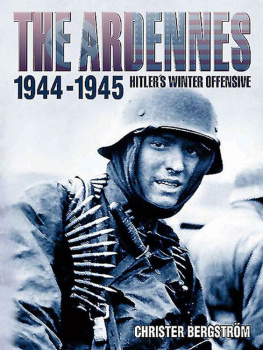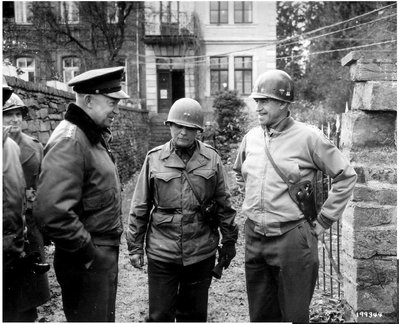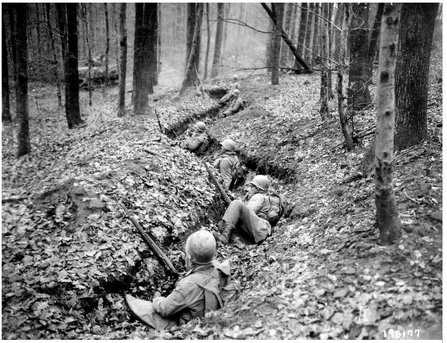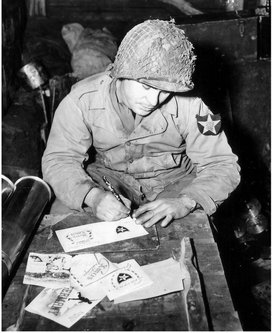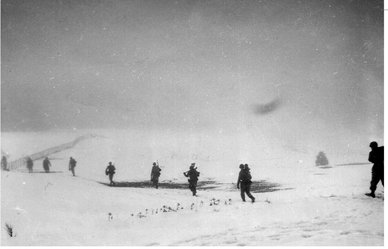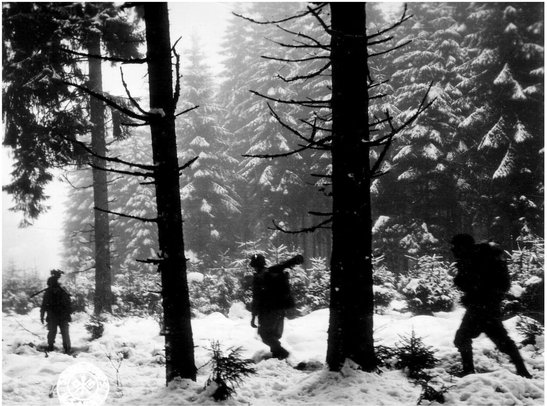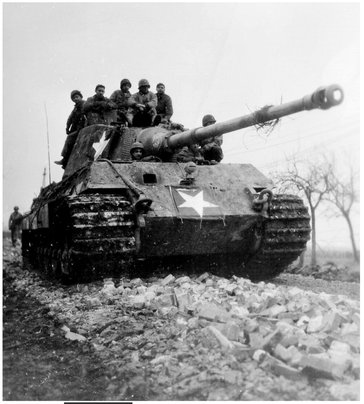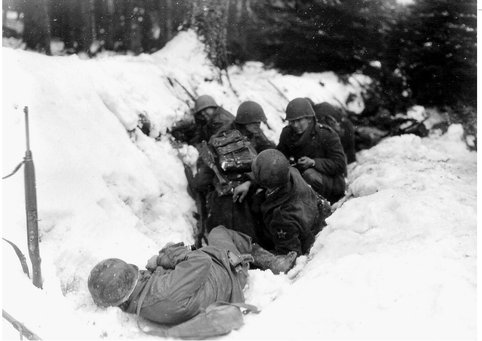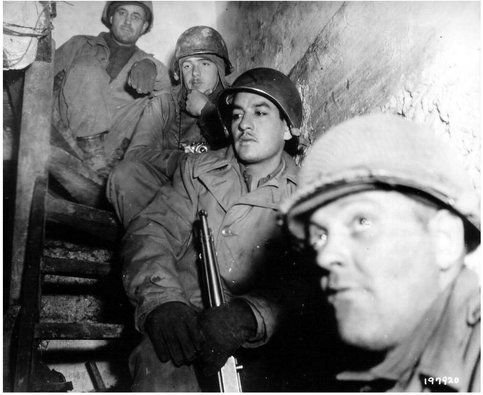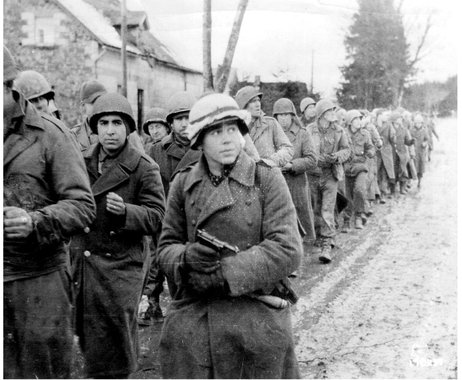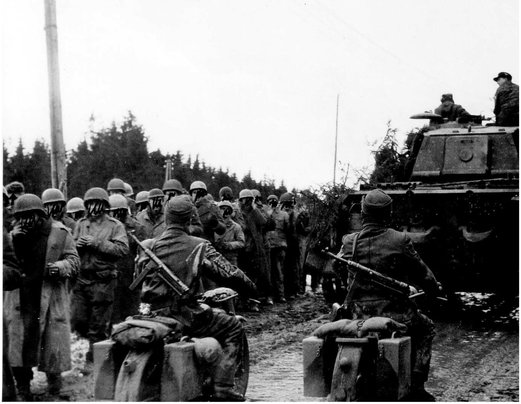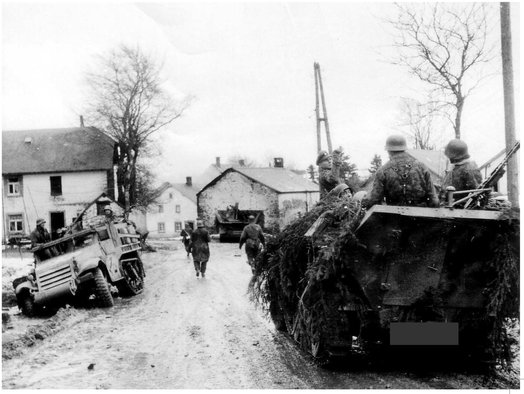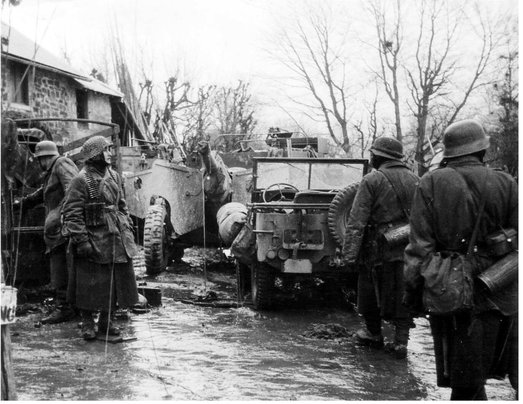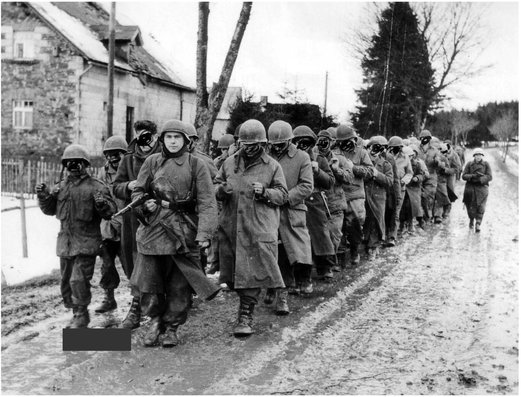Chapter One
Assault
Despite warning signs, Allied Intelligence failed to uncover the size or location of Hitlers offensive. Neither General Dwight Eisenhower, SHAEFs commander nor General Omar Bradley, Twelfth Army Groups leader believed that the Germans possessed the amount of material or men to launch such an offensive. Here it is smiles all round as the two generals discuss their own projected offensive with General Louis Craig of the 9th Infantry Division. 111-SC-199344
Already exhausted by the fierce battles for Bloody Aachen and the Hurtgen Forest, the crews of these M10Hellcat tank destroyers were expecting a respite as the weather across the Ardennes closed in. 111-SC-197366
Overstretched and undermanned. Four infantry divisions, two severely weakened by the fighting in the Hurtgen Forest, the remaining two in action for the first time, faced the entire weight of three Armies. These men occupy a shallow front line position while a Sherman tank covers the forest trail in the background. Positions like this will have been overrun all along First Armys front during the first twenty-four hours of the attack. 111-SC-198177
With Christmas approaching a private of the 2nd Infantry Division rests on a box full of shells as he addresses Christmas cards emblazoned with the Indian head insignia. Two weeks later the shells would be used to help defend the St Vith sector from 5th Panzer Armys attack. 111-SC-197242
Mist and snow during the first few days of the offensive would prevent the Allies from using their overwhelming air power to smash the German armoured columns. These men fight the elements on Krinkelter Ridge a few days before the battle opened. 111-SC-197337
Infantry silently patrol the snow covered Krinkelter Woods in search of German positions on First Armys front. Four days later the brunt of the German offensive would break through General Courtney Hodges thinly stretched front. 111-SC-197350
Forty-eight hours before the blow struck, General George S. Patton meets General Alexander McC Patch at Seventh Armys headquarters. While Pattons Third Army would have to rush to the aid of Hodges First Army around Bastogne, Seventh Army would face First Armys subsidiary attack in northern Alsace, code named Operation NORDWIND. 111-SC-197450
Just hours before Hitler unleashed his armoured divisions, the 129th Ordnance Battalion was pictured bringing a captured Panzer VI King Tiger back to their headquarters. Little did the crew know that two Panzer Armies armed with monsters such as these were gathering opposite First Armys front. 111-SC-197752
Men of the 2nd Infantry Division hug the sides of a shallow ditch as German shells rain down on their positions. First Armys weak line had little chance of holding back a determined armoured thrust. 111-SC-197304
There are anxious faces as these GIs shelter in the cellar of a ruined house from the German bombardment. The attack was heralded by a short hurricane bombardment designed to shatter the front line troops and cut communications to the rear. By the time First Army headquarters knew it was under attack the infantry divisions spearheading Fifth and Sixth Panzer Armies attacks would have swept the roads clear for the armour. 111-SC-197920
In the north Dietrichs Sixth Panzer Army had orders to drive to the Meuse and cross on both sides of Liege while infantry divisions covered the flank. This line of American prisoners marches into captivity as a King Tiger rolls forward. Taylor Library
Allied air superiority was a constant source of worry for the German commanders. If the bad weather broke the sky would be full of American fighters and bombers. These guards and prisoners search the skies for signs of aircraft. Taylor Library
In the centre Manteuffels Fifth Panzer Army encountered difficulties to begin with as American rearguards stalled the initial attack. The weight of numbers soon began to tell and once breakthroughs were made, large numbers of GIs found themselves cut off and low on ammunition. Taylor Library
Panzergrenadiers were the German equivalent of the American Armoured Infantry. Elite soldiers, mounted on halftracks, accompanied the Panzers as they carved their way through First Armys lines. The men on the left are comparing differences between the American M3 halftrack and their own vehicles. Taylor Library
Huge stocks of ammunition, fuel and supplies had to be left behind in the retreat. German supplies were often lacking and this group of soldiers are searching for useful items. Taylor Library

